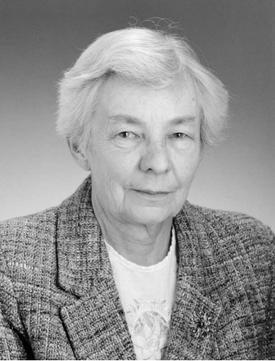Mary Amdur facts for kids
Quick facts for kids
Mary Amdur
|
|
|---|---|
 |
|
| Born | February 18, 1921 Pittsburgh, Pennsylvania, US
|
| Died | February 16, 1998 (aged 76) |
| Nationality | American |
| Education | Chemistry (BSc.) at University of Pittsburgh; Biochemistry (Ph.D.) at Cornell University |
| Known for | Toxicology research into 1948 Donora smog |
| Spouse(s) | Benjamin Amdur |
| Children | 1-David Amdur |
| Scientific career | |
| Fields | Toxicology |
| Institutions | Harvard University; MIT; New York University |
| Thesis | Role of Manganese and Choline in Bone Formation in the Rat |
Mary Ochsenhirt Amdur (February 18, 1921 – February 16, 1998) was an American scientist. She studied how chemicals affect living things, which is called toxicology. She was also a public health researcher, meaning she worked to keep communities healthy.
Mary Amdur is famous for her important work on air pollution. She investigated the effects of the 1948 Donora smog, a terrible air pollution event. Her research showed how breathing in sulfuric acid could harm people's lungs. Even though she faced threats and lost her job because of her findings, she kept going. Her brave work helped create rules for cleaner air. Later in her life, she received many awards for her contributions to science.
Contents
Early Life and Education
Mary Amdur was born in Pittsburgh, Pennsylvania, in 1921. She loved science and earned a bachelor's degree in chemistry in 1943. This was from the University of Pittsburgh.
She then went to Cornell University to study biochemistry. This is the study of the chemistry of living things. In 1946, she earned her PhD, which is a very high degree. Her research was about how certain chemicals help bones form.
After her studies, Mary Amdur started working at the Massachusetts Eye and Ear Infirmary. In 1949, she joined a research team at the Harvard T.H. Chan School of Public Health. She married Benjamin Amdur in 1944. They had one son, David, who was born in 1961.
Important Research on Air Pollution
Mary Amdur's most famous work began with the 1948 Donora smog. This was a very bad air pollution event in Donora, Pennsylvania. Many people got sick, and some even died.
A company called American Smelting and Refining Company (ASARCO) paid for research into the smog. They wanted to show that their pollution, like sulfuric acid, wasn't the main problem.
Guinea Pig Experiments
In 1953, Mary Amdur and her husband created a special way to study air pollution. They sprayed a mix of sulfuric acid and sulfur dioxide into humid chambers. Then, they had guinea pigs breathe this mist. They wanted to see what happened to the animals' lungs.
The Amdurs even bought their own guinea pigs for this important project. They spent a holiday weekend doing these experiments.
Shocking Discoveries and Challenges
Mary Amdur found that breathing the mist had serious effects. The guinea pigs had trouble breathing, lost weight, and developed lung disease. She shared these findings at a science meeting in December 1953.
She then wrote a paper about how even low levels of sulfuric acid affected people. These levels were similar to the Donora smog. This paper caused big problems.
At a meeting in 1954, Mary Amdur was threatened by two men. But she was brave and presented her findings anyway. The company funding the research expected to control what was published. When Mary returned, her boss told her to remove her name from the paper. He also wanted her to stop it from being published.
Mary Amdur refused. Because she stood up for her science, she lost her job on that team. The paper was never published.
Continuing Her Work
Even after losing her job, Mary Amdur didn't give up. She quickly found a new research role at the Harvard School of Public Health. She kept studying air pollution until 1977.
Later, she moved her research to the Massachusetts Institute of Technology (MIT). She worked there for 12 years. At MIT, she studied how metals and gases interacted when people breathed in sulfuric acid.
In 1989, she moved to New York University. She continued her important research there until she retired in 1996.
Awards and Legacy
Mary Amdur received many awards for her scientific work. These awards showed how important her research was.
- In 1974, she received the Donald E. Cummings Memorial Award. This honored her lifetime contributions to her field.
- In 1984, she received the Henry F. Smyth Jr. Award. This was for finding and meeting research needs in industrial hygiene.
- She also received awards from the Society of Toxicology in 1986 and 1997.
Mary Amdur died in 1998. She is remembered as the "mother of smog research." Her work was very important in creating rules for cleaner air. An award for students, the Mary Amdur Student Award, is given each year in her honor.

